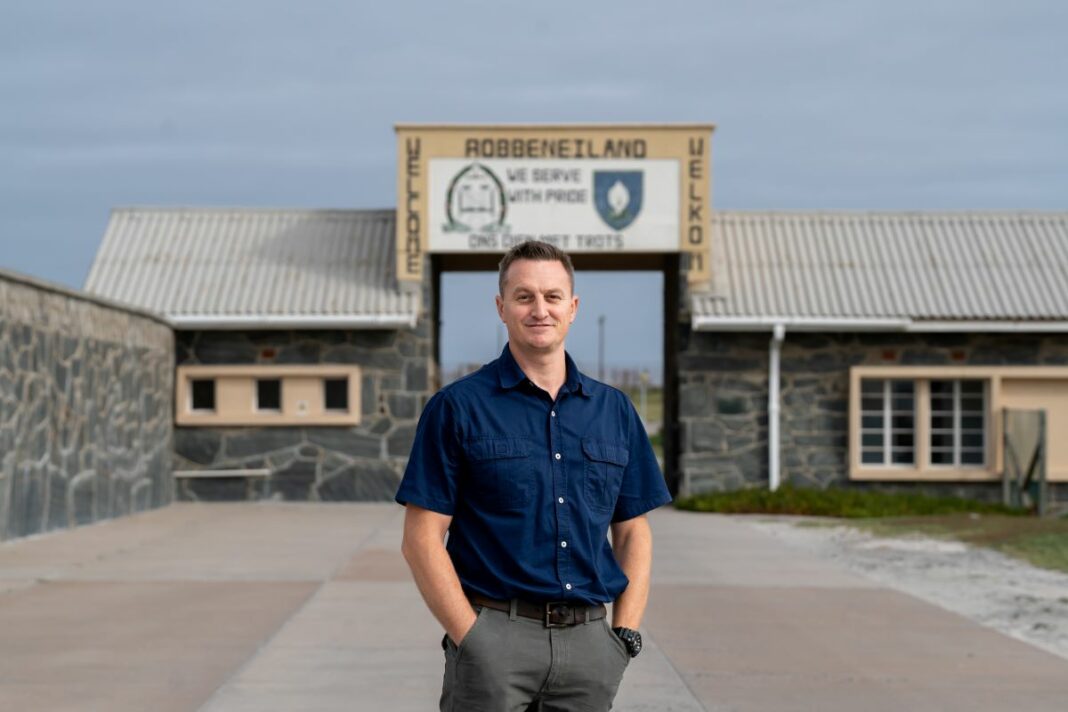Planning an open water swim to Robben Island? Well, you can now do so knowing the exact temperature of the sea waters that surround one of Cape Town’s Big 6 tourist attractions. This is thanks to a bit of pro bono work by a group of CSIR researchers for the Cape Long Distance Swimming Association (CLDSA).
With the expertise and involvement of a team of port and coastal engineers from the CSIR, the website of the CLDSA now offers daily water temperature readings of the Atlantic water temperature enveloping Robben Island. This is set to benefit the iconic isle that continues to attract swimmers and athletes from across the world, notably, marathon swimmers who enjoy extreme endurance and adventure in the chilly waters off Cape Town.

It all started during 2021, when CSIR senior technologist Sarel Haasbroek was approached by Shaun Reznik and Shonee Cornelissen, who are representatives of the CLDSA, about the possibility of introducing a water temperature station sensor close to Robben Island. The purpose would be to supply swimmers with accurate and reliable sea surface water temperatures, which would greatly assist its members when planning a crossing.
“While I knew that it was possible, the CLDSA did not have the required funding. We knew that the data collected at Robben Island with the installation of a water temperature station was crucial for long-term temperature monitoring regarding the impacts of climate change. Being involved in the project would not only benefit the CLDSA, but it would have social and public good value, and would also benefit the CSIR’s datasets,” says Haasbroek. Tempted to be involved in creating a life-changing intervention with the CLDSA, Haasbroek discussed the matter with CSIR research group leader Eugene Mabille and convinced him that it could be done, using some unused equipment in storage.
Setting up the science for super swimmers
With the help of Sabelo Madlala, who is the environmental manager at Robben Island, the CLDSA obtained approval to install the station inside the island’s harbour. The next step was for the CSIR team to conduct a site visit and inspect possible locations for the water temperature station sensor. Two locations were identified.
It soon became apparent that the temperature difference on the inside and the outside of Robben Island harbour needed to be considered. Therefore, the CSIR monitored the temperature at the two identified locations for two weeks. A comparison of the temperature results from the two recorders revealed an average temperature difference of 0.26° C, which was deemed insignificant for the application.

A decision was taken to install the water temperature station or sensor at Robben Island harbour’s South Pier jetty due to the presence of a huge colony of Cape cormorants on the North breakwater. “The Robben Island Marine Protected Area serves as an inshore and offshore conservation region around and near the island. This is an official protected area for the endemic birds and, thus, we decided to keep the installation simple and position the water temperature station sensor within the interior of the harbour. In this manner, it disturbs the roosting colony of cormorant birds less or not at all and protects the station and solar powered system from the extensive amount of guano that the birds produce,” Haasbroek chuckles.
The CLDSA covered the cost of the manufacturing of the water temperature station quay mounting structure and put in place a data contract to allow for data to be sent to the CSIR WaveNet server in Stellenbosch via mobile network connection.
“I designed the water temperature station quay mounting structure and a local steel manufacturing company in Stellenbosch manufactured it,” Haasbroek says. “A water temperature station or sensor needs to be in a safe area wherein it can be easily serviced and repaired as required and, of course, it needs to be protected from theft. Once all the equipment, hardware and consumables were developed for use, it was time for us to test the system.”

Teamwork and technology enable smooth swim crossings
The next step involved scheduling the collection of the data, which Haasbroek put in place, to collect the surface water temperature data automatically every 10 minutes.
Ursula von Saint Ange, a CSIR technician, created the programs that convert the data and create daily, weekly and monthly files thereof. “I then also had to create a way for the CLDSA’s website developers to access the data safely,” Haasbroek says.
Haasbroek and CSIR technician Vuyo Ndayi completed the installation on 2 September 2022.
Thanks to the goodwill of the CSIR and its staff, who invested a significant amount of their personal time, today the CLDSA can display accurate sea water temperature on its member page in real time.

The CSIR has agreed to assist with the ongoing maintenance of the water temperature station on condition that the CLDSA arranges access for the CSIR to Robben Island and provides the ferry tickets necessary to get to the island.


